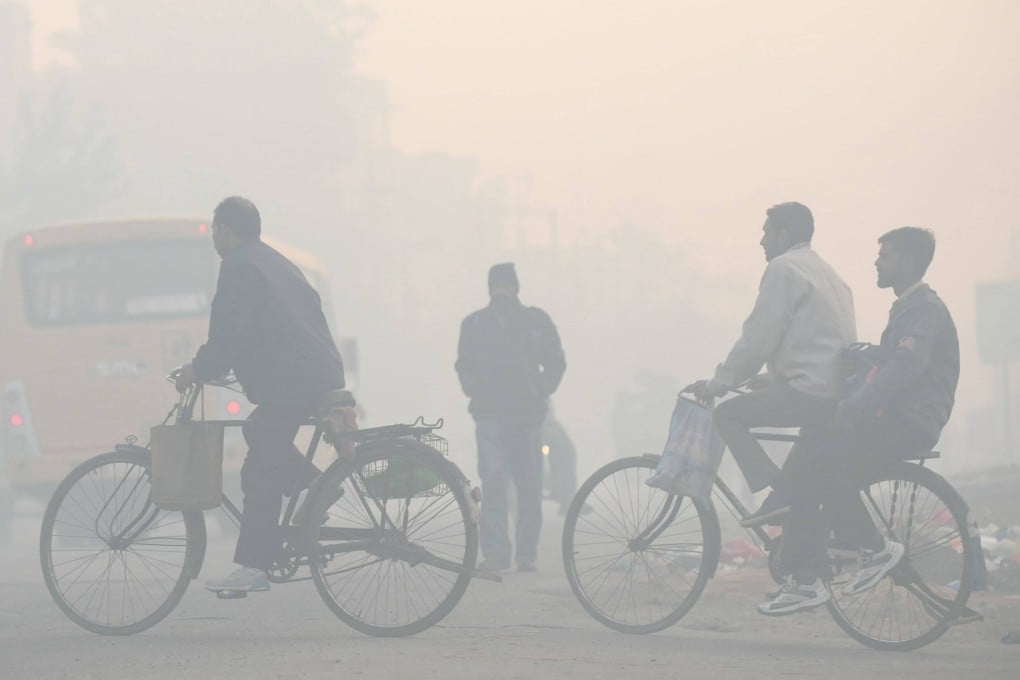What India can learn from China about cleaning up its ‘constant’ filthy air problem
- In the 30 days through November 9, levels of hazardous PM2.5 microparticles averaged 14 times higher in New Delhi than in Beijing
- China cleaned its air by limiting cars on the road, capacity in emissions-heavy iron and steel industries fell, and coal-fired power plants were banned in areas

India and China have each struggled with throat-searing air pollution blanketing their major cities with the onset of winter. Only one country has succeeded in tackling the problem.
China has made strides in scrubbing the once-foul air that had become a fact of life each year in major cities like Beijing and industrial towns across the country. Meanwhile, huge swathes of northern India continue to choke on clouds of polluted air, peaking during the winter period as temperatures drop, winds disappear and farmers across the region set their fields ablaze.
In the 30 days through November 9, levels of hazardous microparticles known as PM2.5 averaged 14 times higher in New Delhi than in Beijing, according to air-quality tracker IQAir. The picture is even more stark outside the two capitals. Last year, 65 of the 100 most polluted cities were in India, while China had just 16, according to IQAir.
Previously, it was China that dominated the list: In 2017, about three-quarters of IQAir’s tally of the world’s most polluted cities were in China, while 17 were in India.
India’s pollution crisis is conspicuously absent from its climate and environmental ambitions, both on the world stage and at home. It also remains far from the top of the agenda of a coming national election that observers widely expect will sweep Modi into a third term.
The pollution epidemic is a problem not just for the health of India’s 1.4 billion residents – the biggest population of any country in the world – but also for its economy, currently the fastest-growing of any major nation. A World Bank report published in June estimated that India’s annual increase in fine particle pollution shaves 0.56 percentage points off its annual GDP growth every year due to reduced worker productivity and capital formation.
This is the biggest challenge that urban India faces today
Air pollution in India also reduces the productivity of a range of business assets – blocking sunlight from solar panels, degrading electronic circuitry and reducing crop yields, according to a 2021 report commissioned by the Clean Air Fund.